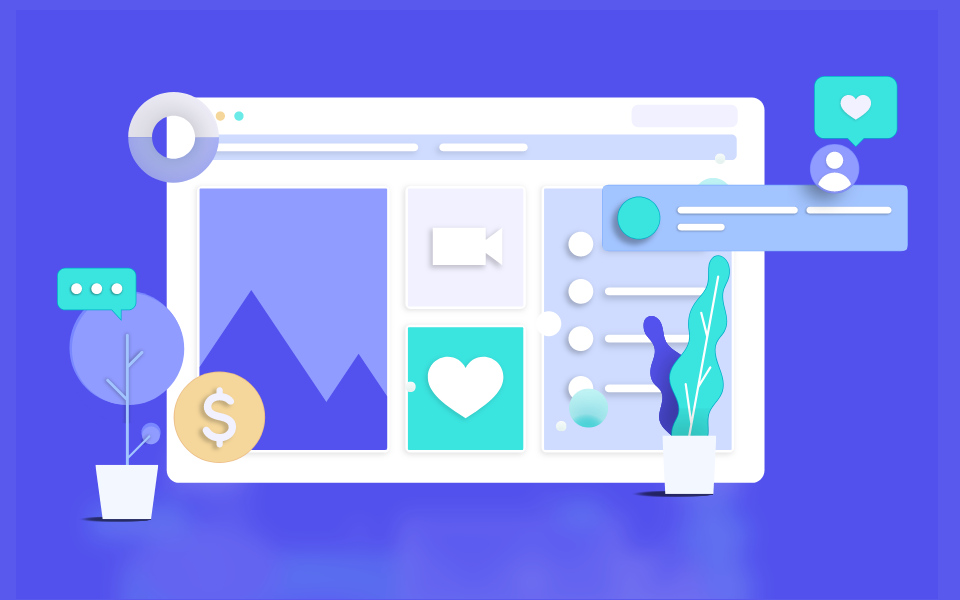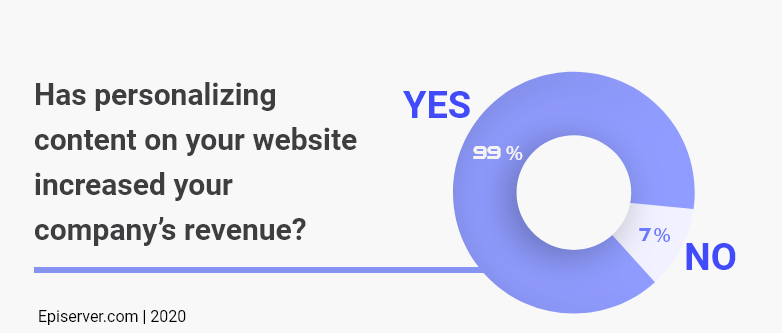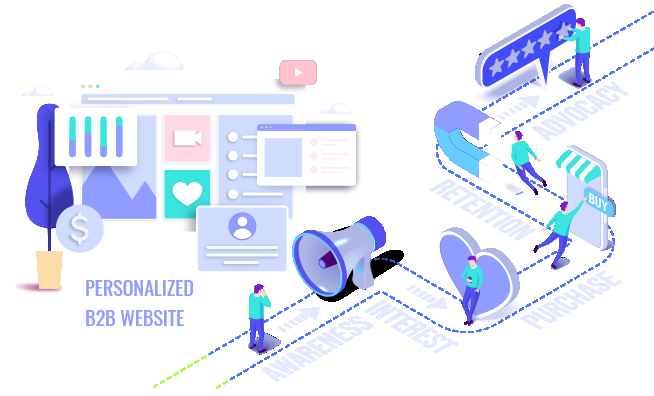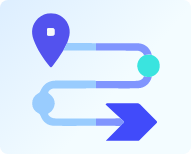Subscribe to Newsletter
Stay up-to-date with the latest tips & strategies. Get additional discounts & alerts on offers.

Over the past few years, personalization has become a widely adopted strategy and a crucial component of modern B2B marketers. One of the reasons for the rapid growth is the increase in the usage of B2B eCommerce sites.
“The B2B eCommerce revenue is exceeding the B2C revenue by a large margin and is expected to be twice as large as the B2C eCommerce market in 2020.” – Frost and Sullivan.

Therefore, marketing automation software like personalization is being used by many companies to get a competitive edge. Since personalization has become the trend in the B2C eCommerce industry, B2B businesses are also trying to leverage this B2C practice to generate more sales and revenue. Data-driven practices like marketing automation are making it easier for businesses to offer a high-class experience to their customers.
As per the study done by Email Monday, more than 55% of top B2B organizations have already implemented a form of marketing automation technology.
Personalization software is a game-changer in B2B, and more businesses have started to implement effective personalization into their website and email marketing strategies. There are numerous ways in which personalization can be used in B2B digital marketing.

“According to a survey, over 94% of the brand managers hailing from different industries said that personalization played an important role when it came to reaching their company’s objective.” – (Source)
In the current information-driven world, consumers prefer ads and marketing campaigns to be tailored to them and expect personalized encounters. However, it’s challenging to create personalized content that resonates with B2B prospects.
But with the advancement of technology marketing automation tools like personalization has become easier and prevalent in the B2B industry. Since websites are the focal point of B2B marketing because it provides its clients with a brand experience, this article will focus on the role of website personalization and explore why personalization is crucial to B2B’s success. Before we get started let’s understand what website personalization is and its importance.
Website personalization is a strategy used by marketers to create a customized experience for visitors of their website. Website personalization helps you provide your visitor’s tailored recommendations, dynamic content, and even exclusive offers. This provides the customers a unique experience that is tailored to their needs and desires.
Personalization is a form of marketing automation that is configured based on a visitor’s demographics, interests, actions, or behavior on your website.
“Personalization is the automatic tailoring of sites and messages to the individuals viewing them so that we can feel that somewhere there’s a piece of software that loves us for who we are.” – David Weinberger

The main goal of implementing personalization in your website is to enhance the experience of your potential customers by addressing their needs and interests before they mention them.
A survey found that 74% of customers feel frustrated when the website does not have personalized content, while the same survey also found that 93% of companies have seen a steady increase in the conversation rates because of website personalization.

Personalization is all about creating unique experiences and giving your target audience what they are looking for, fulfilling their long-term engagement goal, and building customer relationships. Not only that, but it also benefits the customer and offers huge rewards for the business that adopt it and repurposes the existing content to site visitors.
Businesses can group their customers based on their similarities and determine the most valuable customers among them. And behavioral targeting offers many benefits for B2B organizations. Brands need to adopt at least one kind of website personalization to keep up with the industry players.
Many B2B marketers find it challenging to personalize their website. So how do you personalize your websites? Don’t worry, we got you! With our step-by-step guide, you will be able to personalize your B2B website.

Before you start personalizing your website you should find and understand your target audience. Learning everything about your target audience requires a lot of research and surveys. You need to know what your website visitors are looking for including their needs and interests. This will help you provide them with the content they specifically need.
You can also create detailed customers profile which can include their name, email, job title, demographic info, goals, etc. You can find out more about your target audience by using analytical tools such as Goggle Search Console or Google Analytics.
Have you ever faced difficulties in identifying your target audience?
Well, now you can Identify your target market quickly.

Once you group your target audience based on their needs, interests, and actions it becomes easier to provide them with customized or personalized content.
Your website visitors can be segmented into three groups, which are:

Once you have your target audience segmented you can begin to offer them the content that they are looking for. Since your visitors have different goals, priorities, and decision drivers you must create compelling content. This content can be a landing page for a product or service or even the blogs, case studies, or eBooks that you have already added to your website.
You can also create a landing page through which you can tailor content for IT companies. Providing content like reviews or interviews of experts will help in creating recognition and trust with the visitors of the website. Personalization tools will help you create a different version of the landing page with different visuals and texts.

You can start creating a journey map for different groups of visitors. A well-planned journey map will highlight a particular visitor’s motivators, pain points, what there are looking for at every stage of the buyer journey. This personalization strategy helps you guide the visitors till they purchase your products and services.

You can use tools such as Google Analytics and Google Search Console to check the results of your personalization efforts. The results will give you a detailed analysis of who visited the website, how often they visit the pages, and even the time they spent on your landing pages.
If the result doesn’t show positive results that means that your visitors are not able to find what they are looking for. You can make corrections or changes based on those results.

You have to test your personalization efforts and make constant changes to them. You have tracked the performance of personalization components, analyse available data, test variations. Based on the results you can always upgrade it and keep adding new features to attract new visitors.
B2B personalization is not about making the customer purchase your products and services impulsively like B2C personalization. It is about getting a client to buy more efficiently and conveniently and to encourage engagement with your company. Another survey revealed that out of 500 a majority of international B2B clients prefer to purchase their orders through websites, followed by emails and social media.
Enhancing your B2B target audiences experience will help you achieve longer visits, repeat visits, and increased conversations. But developing a personalized experience for B2B websites is easier said than done. B2B customers are way different than your normal B2C customers, as they have different priorities, obligations, and budget constraints which makes it different to implement personalization. B2B website personalization also requires a lot of research and multiple client visits, making it more complex.
However, if the website personalization is done correctly, it is definitely worth the effort, as it improves your brand experience and removes friction from your sales funnel.
“According to a study done by Gartner, over 46% of B2B customers believe that custom offers are extremely important. The same research paper also found that there was a 15% increase in the profits of the B2B companies that used personalization technologies in 2020.”
Do you want to find out more information on creating content for the B2B website?
Know more about inbound sales strategies and marketing related blogs.
More interaction or engagement with your B2B target audience.
Helps in improving customer loyalty.
Up to 19% boost in sales, as per MarketingProfs.
Give the customers unique, and customized experiences.
Efficient communication and higher loyalty with prospective clients.
Provides visitors tailored recommendations and exclusive offers to increase sales.
Website personalization also boosts a customer’s satisfaction and engagement.
There are various types of personalization and different ways to use it on your website. Everything from the CTAs to pop-ups offers to headlines can be personalized. B2B website personalization requires strenuous research, planning, content creation, data analysis, and has to improve continuously according to the results. The personalization software helps with the automation of content recommendations and improves relevancy.
These personalization tools are designed to send prompts and reminders to potential customers and help them through their buyer journey. Many B2B companies are now leveraging these tools for account-based marketing as it generates more leads. You can use Content Management System (CMS), as it helps you personalize all your content with it.
This software creates personalized user experiences based on IP addresses.
Content personalization has become an important part of digital marketing as it helps in speeding up the customer journey. You can make content specifically for your target audiences to give them a good user experience.
One of the easiest steps to do this is to incorporate content materials to support your email or social media campaigns. These personalized content suggestions can be applied in blog articles or a knowledge center if you have that on your website.
You can create the knowledge-sharing center based on design or other criteria to help your prospective clients in locating the content they need. If you want to support your account-based marketing activity, then you must create an asset place, as it will help you to target your top leads.
Call-To-Actions are an important part of personalizing your website, the links you provide will prompt an immediate response or even encourage an immediate sale. A call to action or a CTA is a written directive used in marketing campaigns as it can be incorporated into sales scripts, advertising messages, or web pages, which compel an audience to act in a specific way.
Adding personalized discounts or offers is what will attract more customers and increase your loyalty rates. Once the potential customers visit your websites, they will be greeted with exciting offers which will encourage them to make the purchase.
One tip is using words such as “now,” “today,” “free,” and “new” as it creates urgency. You can also provide order or delivery affirmations or updates, product information so that they know that you are taking their whole experience seriously.
The whole buying process should be designed in a way that is smooth and efficient for your customers. Custom searches with chatbots will help your visitors easily browse through your site and find what they need. When it comes to personalizing user search and optimizing product-finding capabilities, no one does it better than Amazon.
There are a lot of different ways a business can and should use personalization for their B2B website. Not only will it create a brand experience for your visitors but will also turn them into potential customers, which will in return increase your sales and revenue. Website personalization is the main tool to boost satisfaction and build more engagement with your visitors.
Hope the pointers above help you understand its importance and personalize your own B2B website.
Psst! Are you looking for a trustable and frequently updated email list specific to an industry?
Get in Contact with our Representatives!
Show some love!

Subscribe to Newsletter
Stay up-to-date with the latest tips & strategies. Get additional discounts & alerts on offers.
Related Articles
Subscribe to Newsletter
Stay up to date with the latest marketing, sales, and service tips and news.
Enter Your Details